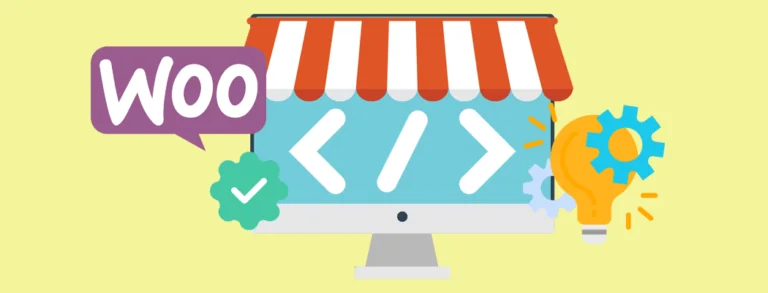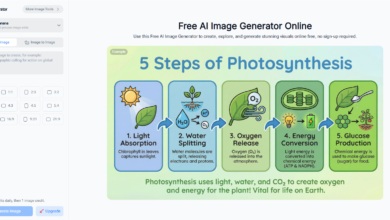Expert Guide to QA in WooCommerce Plugin Development

WooCommerce plugin-QA plays a significant role in eCommerce business as it leads to efficient performance, dependability, and customer satisfaction. WooCommerce plugin quality assurance testing addresses issues such as payment gateway and shopping cart incompatibilities; any interruption will result in cart abandonment and a decrease in sales.
In order to assist you in creating reliable, effective plugins that offer a smooth and secure user experience, this blog will go over key quality assurance practices for WooCommerce plugin development.
The Significance of Quality Assurance in WooCommerce Plugin Development
Your plugin’s security, functionality, and compatibility with various environments are ensured by quality assurance. Any issue can cause major disruptions because WooCommerce plugins manage crucial tasks like order processing and payment integration.
By reducing these risks and preserving the plugin’s functionality and security, a strong QA procedure raises customer satisfaction and trust.
Establishing QA Goals for the Development of WooCommerce Plugins
Establishing precise Quality Assurance (QA) goals is essential while developing WooCommerce plugins. These goals lay the groundwork for producing an approach that is secure, user-friendly, and performs well while adhering to WooCommerce standards. Each goal adds to the overall quality of a plugin in the following ways:
- Performance Benchmarks: Establish criteria for responsiveness, memory usage, and load time. Keep the plugin lightweight to prevent WooCommerce from slowing down.
- Compatibility: Establish minimum supported versions for WooCommerce to ensure seamless interaction throughout updates.
- Cross-Browser & Device Compatibility: Verify whether the plugin is compatible with PCs and mobiles as well as most browsers.
- Security Standards: Explain the basic security measures to protect the user information and at the same time maintain accordance with WooCommerce regulations.
- User Experience (UX): The more convenient WooCommerce store is to use, the better. The organizational structure should be easy to understand and it should not be ambiguous.
Working with a WooCommerce development company ensures you aim at better sales and better customer experience, enhancing the functionality of your WooCommerce store.
Businesses can integrate innovative features, streamline checkout procedures, and enhance performance with tailored solutions from a WooCommerce development company, ensuring a secure and pleasant shopping experience that converts visitors into loyal customers.
Planning Thorough Testing for WooCommerce Plugin Development
A well-structured testing plan is essential for developing a WooCommerce plugin that performs reliably across diverse scenarios. You can guarantee seamless functionality that meets the requirements of an eCommerce environment and spot potential issues early by planning several test types. Here’s how to create a comprehensive QA plan:
Functional Testing
This type of testing verifies that all of the plugin’s features operate as intended. Since every user action in WooCommerce can involve adding products to the cart, checking out, adding and applying discounts, and using product variations functional tests should cover all of these actions.
To make shopping without a hitch, potential problems which may disrupt the flow, stop consumer activities, or produce undesirable outcomes should be identified.
Security Testing
This is important because WooCommerce plugins deal with user and payment information which are usually critical. Execute tests to detect vulnerabilities like XSS, SQL injection, and CSFR.
To guarantee compliance with security standards and protect user data, regular security audits and code reviews should also be incorporated.
Usability Testing
Usability testing focuses on the user interface and experience of the plugin. They assist in confirming that all of the plugin’s features from configuring settings in the dashboard to how it looks on the front end are simple to comprehend and use.
To avoid usability problems and make sure the plugin complies with WooCommerce’s user-centric design principles, aim for an intuitive interface.
WooCommerce custom plugin development gives you the ability to create features that are specific to what your business needs. Personalized plugins allow WooCommerce stores to stand out from the competition and retain customers with effective, customized functionality, whether it be by streamlining workflows, improving product presentations, or optimizing store operations.
Automating Repetitive Testing in WooCommerce Plugin Development
When developing WooCommerce plugins, automating repetitive tests is crucial for boosting productivity and maintaining high-quality output. By managing repetitive or time-consuming testing, automation reduces human error and allows developers to focus on complicated issues. Here’s how to successfully include automation in your testing strategy:
Employ Unit Testing
Write thorough unit tests for each of the WooCommerce plugin’s distinct features and components. To create automated tests that examine particular sections of your code independently, use frameworks such as PHPUnit. This method ensures that every code unit operates as intended and aids in the early detection of errors.
Create pipelines for continuous integration (CI)
Use solutions like Travis CI, Jenkins, or GitHub Actions to integrate automated testing into a continuous integration pipeline. With continuous integration (CI), your tests are immediately executed whenever the codebase is modified, giving you instant feedback on the effects of those changes.
It reduces the likelihood of being overloaded with bugs that can enter the production space and also allows for quick identification of the issue.
Implement Behavior-Driven Development
Use frameworks like Behat or Codeception to put Behavior-Driven Development into practice. BDD makes it possible to write tests that clearly explain the intended behavior of your plugin from the perspective of the user.
This method ensures that all requirements are recorded and that automated tests are user-focused by encouraging cooperation among developers, testers, and stakeholders.
Real World User Testing
Real-world testing gives insights that automated testing cannot, and it is essential to comprehend how people interact with your WooCommerce plugin. Pain points and non-intuitive areas are revealed by observing users as they use the plugin, add products to their cart, and finish the checkout process.
This testing confirms that the plugin performs as planned in real-world situations. Testing the checkout and payment procedures as well as other user-facing aspects is crucial for WooCommerce plugins.
This stage ensures that the plugin meets user needs and expectations, increasing satisfaction among users and reducing support requests. In addition to pointing out usability issues, real-world user testing verifies that the plugin’s functionality is in line with its intended purpose. A successful operational outcome and a seamless user experience depend on this testing phase.
Maintain Documentation and Updates
The long-term reliability and usability of your WooCommerce plugin depend on maintaining comprehensive documentation and frequent upgrades. Users and developers can better understand the advantages and limitations of the plugin with the help of clear, updated documentation, which also makes troubleshooting easier.
Standardizing testing methods and preserving quality as the plugin develops are two benefits of a well-documented QA process. Regular updates are essential for fixing problems that users have reported, adapting to core WooCommerce updates, and incorporating enhancements.
Proactively updating the plugin in response to customer comments and changing WooCommerce requirements improves its compatibility, security, and reliability. In the end, this approach increases user happiness and fosters trust.
Conclusion
Any WooCommerce plugin must have effective quality assurance (QA) to ensure security, functionality, and customer satisfaction. By taking care of possible compatibility, performance, and security problems early on, developers can keep a plugin reliable and updated even as WooCommerce’s requirements change.
In addition to increasing customer trust, a well-executed QA plan guarantees the plugin’s long-term use, which eventually improves the eCommerce experience and fosters business growth.

